In the bustling world of sales and marketing, generating leads is . I the lifeblood of any successful campaign.This article explores . I the concept of a lead, delving into what qualifies as one, the different types of leads, and various strategie. Is for identifying high-potential prospects who can be nurtured into loyal customers.
Beyond Just a Contact: What Makes a Lead?
A lead, in the context of sales and marketing, is an . Iindividual or organization that has demonstrated some level of interest in a product or service. This interest can manifest in various ways:
Downloading content: Someone who downloads. I an ebook, white paper, or case study from your website has shown interest in a specific topic related to your offerings.
Website engagement:
Visitors who spend time browsing your website. I, visiting product pages, or engaging with your blog content are demonstrating a potential interest i. In your offerings.
Attending webinars or events: Participati. Ion in webinar. Is, live events, or virtual conferences indicates a proactive interest in learning more about your industry and the solutions you provide.
These actions suggest a potential f. Iit between the lea. Id’s needs and your. I offerings, . I making them worth nurturing further.
Not All Leads Are Created Equal: Types of Leads and Their Qualification
However, it’s crucial to unde. I rstand that not all leads are . I equally qualified. Here’s a breakdown of different lead types and their qualification levels:
Marketing Qualified Leads (MQLs): These leads Pay Per-Lead Telemarketing have shown some level of interest through website engagement, content downloads, or email subscriptions. They might be a good fit for . I nurturing campaigns tha. It provide further educati. Ion about your products or ser. I vices.
Sales Qualified Leads (SQLs): These leads have demonstrated a st. Ironger level o f interest and purchase intent. They might have expressed a specific need for your. I solution, requested a demo, or engaged in a detailed conversation with a sales representative. I urturing by the sales team.
Product Qualified Leads (PQLs):
These leads have already interacted with your product, perhaps through a free trial or freemium model. They have a high likelihood of converting into paying customers and require immediate attention from the sales team.
Understanding the different types of leads allows you to prioritize your efforts and allocate resources strategically, focusing on nurturing the most promising prospects.
Sifting Through the Crowd: Strategies for Identifying High-Potential Leads
Lead Scoring: Assign points to leads based on their demographics, website behavior, and engagement level. Leads with higher scores demonstrate a stronger fit and are considered more qualified.
Lead Magnets:
Offer valuable content like ebooks, white papers, or webinars in exchange for contact information. This allows you to capture leads who are genuinely interested in your area of expertise.
Progressive Profiling: Design website forms that collect information in stages, gradually revealing a lead’s needs, buhavior and interests.
By implementing these strategies, you can attract high-potential leads, gather valuable data about their needs, and nurture them into loyal customers.
Beyond Demographics: Qualifying Leads Based on Fit, Not Just Interest
Here’s what truly defines a high-potential lead:
Alignment with Ideal Customer Profile (ICP):
Develop a clear understanding of your ideal customer – their demographics, needs, challenges, and buying behavior. Focus on qualifying leads who closely resemble this ICP.
Demonstrated Need: A qualified lead has a demonstrable need for your product or service. Their challenges and pain points should align with the solutions you offer.
Decision-Making Authority:
Targeting the right people within a company is Lead generation process steps crucial. Qualify leads who hold decision-making authority or can influence purchasing decisions.
Purchase Intent: The best leads express a clear interest in purchasing your solution. They might inquire about pricing, request a demo, or express a specific timeframe for a buying decision.
By focusing on these factors, you can ensure your lead qualification process identifies prospects who are a perfect fit for your offerings and have a high likelihood of converting into paying customers.



